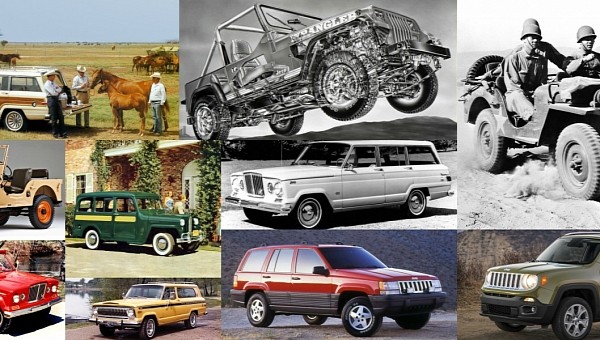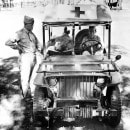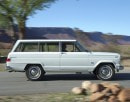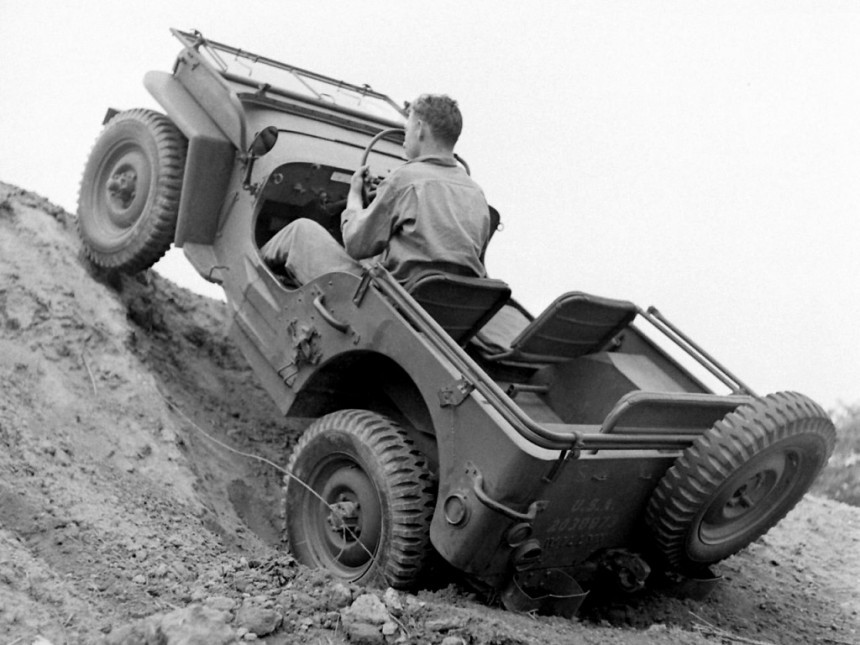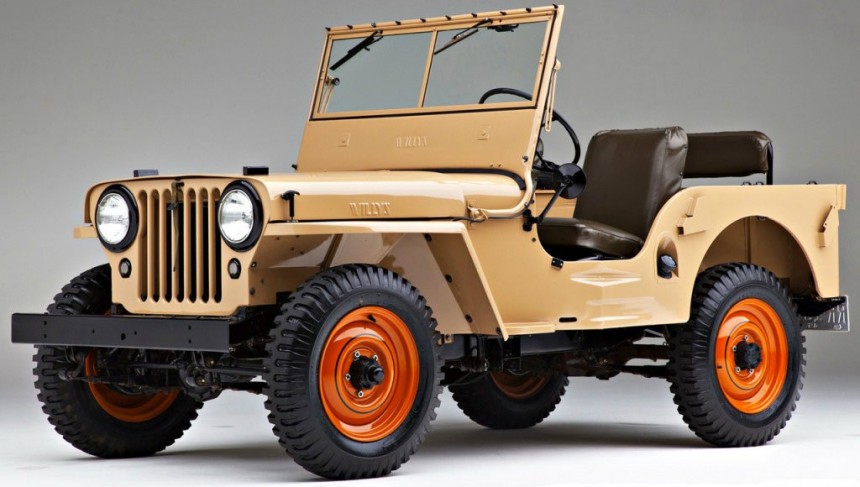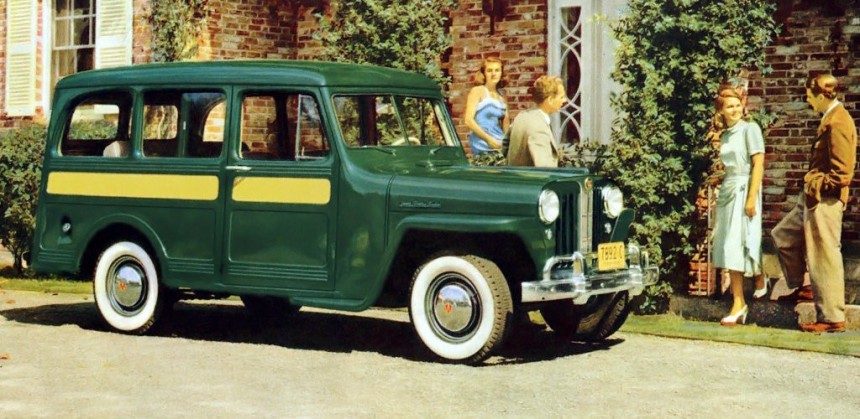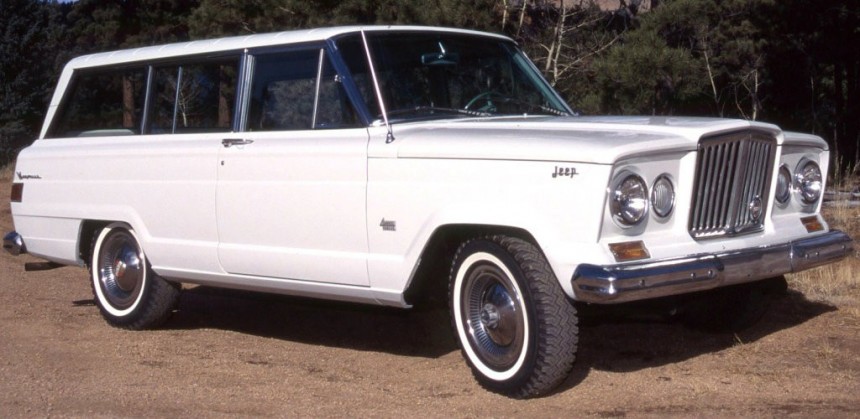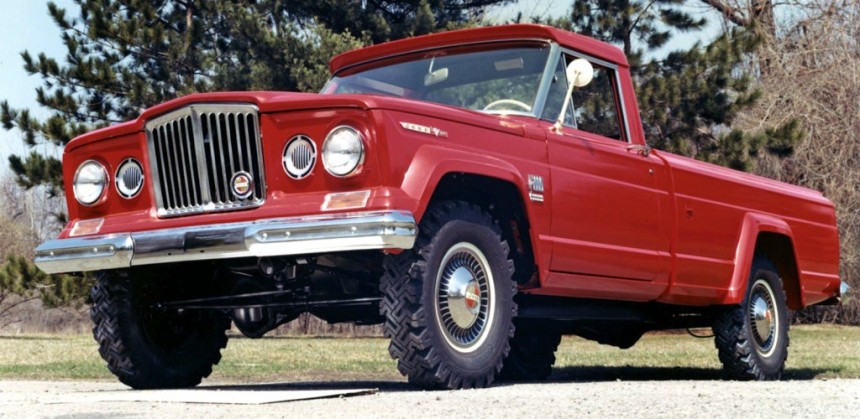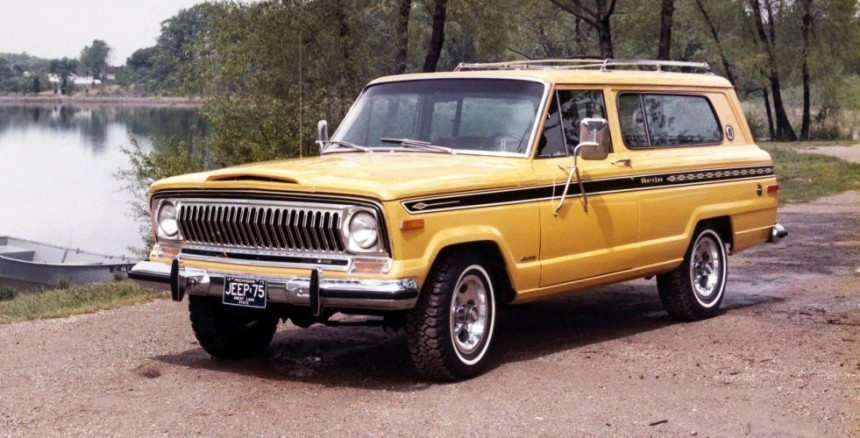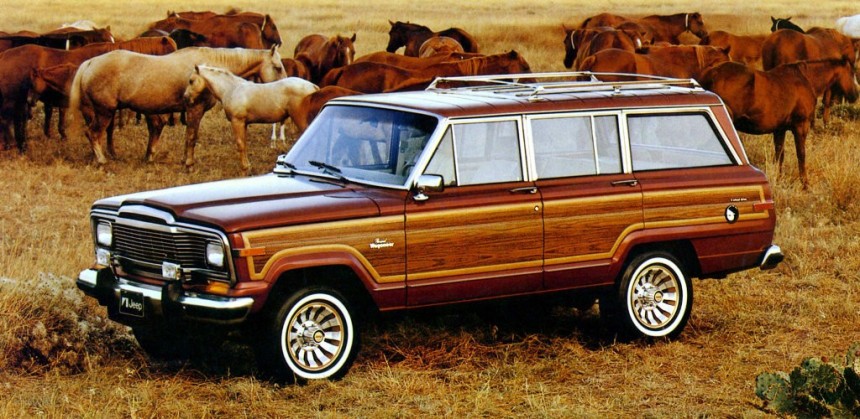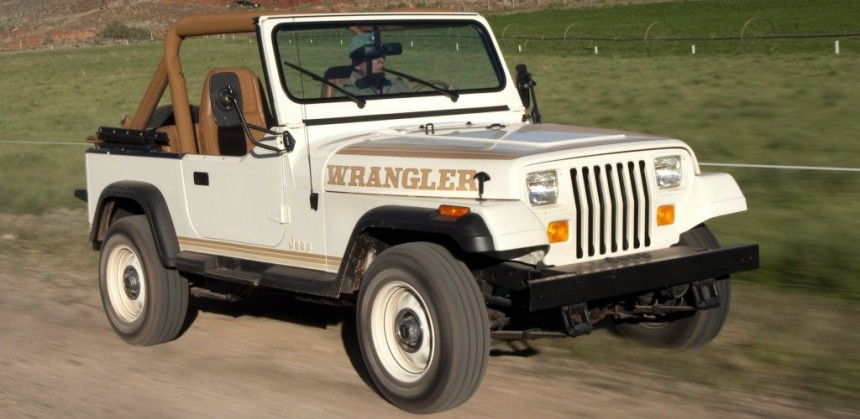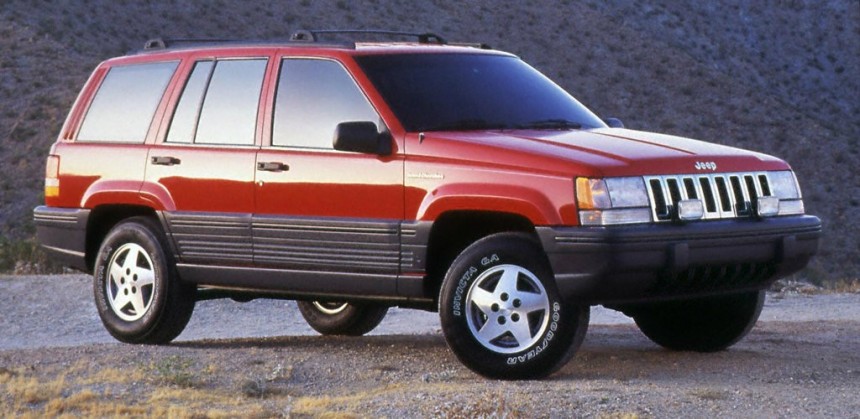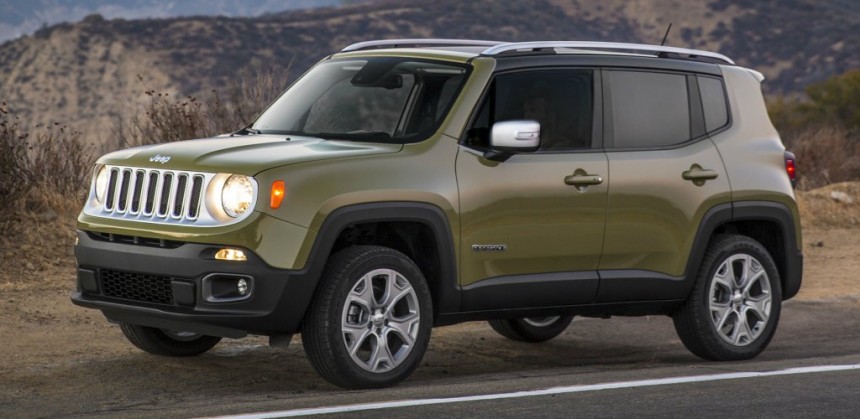Few brands have shaped the automotive realm as we know it today as Jeep did. To celebrate all things Jeep and the closely-knit Wrangler community, we’ve put together a list of 10 historically significant and/or forward-looking 4x4s that made Jeep a household name.
A brand linked to adventure, freedom, and high spirits, Jeep continues to show an unwavering commitment to doing everything in its own way. Even the all-electric Avenger and Ram 1500-based Wagoneer twins have that certain something about them, a certain something that only Jeep could pull off.
The first glimpse of the go-anywhere-do-anything ethos came in 1940 when a freelance engineer by the name of Karl Probst penned the blueprints for a military reconnaissance vehicle in just two days. It’s pretty crazy when you think about it, more so if you remember that certain people take longer to muster up the courage to out of their pajamas.
Jokes aside, those blueprints eventually became the Bantam Reconnaissance Car. And good golly, the prototype met the United States Army’s criteria for a go-anywhere vehicle, with the notable exception of the engine’s torque.
The BRC was further adapted by Willys-Overland and Dearborn’s favorite son. The Ford Motor Company is credited with the design of the vertical-slot grille. Not only did it use fewer resources than Willys’ grille, but it also inspired Willys to adapt the nine-slot design into the seven-slot grille we all know and love.
Quad is the name given to Willys' pre-production prototype, a name stemming from the four-wheel-drive system. By comparison, Ford named their variant GP, an acronym that stands for government pygmy. Bantam’s limited manufacturing output forced the government to award procurement contracts to Willys and Ford.
After producing a limited number of BRC-40s, the Bantam Car Company was tasked with manufacturing trailers. That being said, the 4x4 military vehicle would go into mass production in 1941, the same year Irving Hausmann - a test driver on Willys’ payroll - coined the term Jeep during a press event in Washington D.C.
Over the course of 80-plus years since the World War II command and reconnaissance vehicle entered production, Jeep proved that a four-letter name is more than simply the business card of an automotive brand. If it weren’t for the WWII military vehicle and the CJs that started production in 1945, we wouldn’t have had the likes of the Land Rover Series, Toyota Land Cruiser, and FCA.
It’s necessary to mention that Fiat Chrysler Automobiles is presently a part of Stellantis, as in the cross-border merger with Groupe PSA. The latter comprises Peugeot, Citroen, DS, and former General Motors-owned brands Opel and Vauxhall. As incredible as it may sound, Jeep sells more vehicles in the U.S. than Ram does. The undisputed champs are the Grand Cherokee and Wrangler.
That said, let’s go through 10 of the models that made Jeep... well, Jeep.
Back in 1940, the Army solicited bids from the automotive industry for a quarter-ton reconnaissance vehicle. Only three out of 135 automakers responded, the ones mentioned earlier. Derived from the Quad, the MA flaunts rounded door cutouts, a hand brake on the left side, two circular instrument clusters on the dash, as well as a steering column-mounted shifter. It was pretty spartan, alright!
Most of them saw action in Russia and the United Kingdom under the Lend-Lease program. Around 30 examples of the breed are believed to exist nowadays. The revised MB used to retail at $738.74 back in July 1941 when the Army called for the production of 16,000 units. Adjusted for inflation, that’s around $15,000.
World War II reporter Ernie Pyle sums up what made the extremely versatile Willys MB great in a better way than anyone else: "It did everything. It went everywhere. Was faithful as a dog, as strong as a mule, and as agile as a goat. It constantly carried twice what it was designed for and still kept going." Compared to horses and light vehicles such as sidecar motorcycles, the Willys MB certainly seemed revolutionary to GIs and civilians alike back then.
After World War II ended and the United States got out of that horrible mess known as The Great Depression, peace ensued. Returning GIs were flush with cash, the U.S. economy was flourishing, and the automotive industry sprung back into action. Given the circumstances, Willys-Overland saw an opportunity.
Building on the MB-based CJ-1, the CJ-2A was conceived as a tool to put workhorses out to pasture and help farmers tend their crops easier than they could with a tractor. Thus, Willys-Overland marketed the CJ-2A appropriately. The Toledo-based manufacturer had the audacity of describing the CJ-2A as a powerhouse on wheels, which is wishful thinking even by 1940s standards.
The civilian-oriented Jeep carried a manufacturer’s suggested retail price of 1,090 dollars, which is a little over 18,000 freedom eagles adjusted for inflation. In case you’re wondering what happened to the CJ-2, let’s say that fewer than 50 were built as opposed to a staggering 214,760 examples of the all-around better CJ-2A.
The model 463 Jeep Station Wagon increased the popularity of the brand by reaching out to both family-oriented customers and small businesses in the U.S. of A. The first all-steel station wagon developed as a passenger vehicle from the get-go ended production in 1965. That wasn’t the end of this humble longroof, though…
In fact, the last example of the breed was built in 1981 in Brazil of all places. In the United States of America, the start of production in 1946 coincided with the era that saw young families head for the suburbs to escape the urban jungle’s concrete and glass. Willys really hit the nail on the head with the Station Wagon.
Willys perfected the model in 1949 when 4WD was added to the mix. Essentially the grandfather of the Grand Cherokee, this fellow could even carry 4x8 plywood vertically. Brooks Stevens is the gentleman who designed the Station Wagon. Other high points of his career include the 1949 Hydra-Glide, Oscar Mayer Wienermobile, Mercedes SSK-inspired Excalibur, and Jeep Wagoneer.
Many peeps mistakenly believe that Land Rover invented the luxury SUV with the advent of the Range Rover in 1970. While not far off, they are wrong because Kaiser Jeep pioneered this particular segment. Three years after the Wagoneer was introduced, Kaiser Jeep introduced the Super Wagoneer. But alas, the Super Wagoneer proved to be a sport utility vehicle before its time.
The Kaiser Jeep Corporation, as in the merger between Kaiser-Frazer and Willys-Overland, produced around 1,200 copies of the Super Wagoneer because the world wasn’t prepared to understand that luxury can be intertwined with the capability of a sport utility vehicle. Compared to the Wagoneer, the Super Wagoneer boasted goodies such as air con, power steering and brakes, a seven-position tilt steering wheel, a power retracting rear window that hides into the tailgate, and a push-button radio. Indeed, it was the bee’s knees.
More standard equipment and a 270-horsepower V8 made the Super Wagoneer incredibly pricey too. At $5,943 right off the bat, it was approximately twice the sticker price of its lesser brother. The Wagoneer wasn’t exactly a poverty-spec vehicle, though. The bottom line is, the 1963 Jeep Wagoneer is the first car to match an automatic transmission to a 4x4 system. It goes without saying that this combination defined all sport utility vehicles ever since.
The successor of the 1947 Willys-Overland Truck is the workhorse that put Jeep on the pickup truck market’s radar in grand style. Rolled out in 1962 for the 1963 model year, the Gladiator perfectly complemented the Station Wagon we’ve talked about a few paragraphs earlier. And - of course - it was a tremendous hit.
Available in 120-inch or 126- forms dubbed J-200 and J-300, the Gladiator full-size pickup truck sold like hotcakes. Configurations were plentiful. That’s how the Jeep Gladiator stole a few potential customers away from the more popular Chevrolet C/K line, Ford F-Series, and Dodge D-Series. In total, the Gladiator came in seven configurations: Townside (as in a truck with a wide bed), Thriftside (narrow bed), Chassis, Cab, Stake Bed, Wrecker, and Chassis-based Camper.
Between 1962 and 1988, the utilitarian Gladiator changed its name to the J-Series, then to Pickup, and it was built by no fewer than four different companies: Willys Motors (1962), Kaiser Jeep Corporation (1963 - 1970), American Motors (1970 - 1987), and Chrysler (1987 - 1988). The compact-sized Jeep Comanche pickup truck is to blame for the demise of the Gladiator, which returned to the lineup as a mid-size pickup with Wrangler styling in 2019 for model year 2020.
For all intents and purposes, the Wagoneer was a recreational vehicle with a whiff of premium to it. Although mechanically similar to the SJ-series Wagoneer, the first generation of the Jeep Cherokee wasn’t a premium sport utility vehicle. It was developed to appeal to younger guns, those individuals who were driven to school by their parents in a Wagoneer back in the Swinging Sixties.
It was advertised as being sporty, albeit it definitely wasn’t. Heck, it even had bucket seats and a sports steering wheel. And yes, little things like cool seats and a fancy-looking steering wheel ensured the commercial success of the SJ-series Cherokee. Essentially the two-door sibling of the Wagoneer, the Cherokee leveled up to four doors by 1977, a change that prompted American Motors to rethink its Jeep lineup.
By 1984, the AMC did just that by downsizing the full-size Cherokee SJ to the smaller and nimbler Cherokee XJ. Because of this, American Motors decided to rename the Wagoneer Limited to Grand Wagoneer, a trick that would keep this SUV on life support until 1991.
Dubbed “the gold standard of the SUV market,” the Grand Wagoneer couldn’t hide its age. When all is said and done, the Wagoneer family didn’t change too much from the standpoint of mechanical bits and bobs over its entire production run. A prime example of the old-school approach comes from 1987, the year Chrysler acquired Renault’s share in the American Motors Corporation.
Although Chrysler had a fuel-injected V8 at hand, Chrysler thought that it would be best to stick with the carbureted V8 of AMC origin. Why, though? As the old saying goes, Chrysler was milking the cash cow. Alas, the Grand Wagoneer became one of the last vehicles sold in North America with a carburetor. This not-so-fun fact is even more ridiculous when you think that American Motors offered electronic fuel injection in 1957 for the Rambler Rebel.
All in all, the gray-haired Grand Wagoneer embodies two extremes specific to the Jeep brand: defiance of the norm and cult following. With the demise of the Wagoneer and the arrival of the Grand Cherokee, the Jeep brand stopped making full-size sport utility vehicles altogether. The Wagoneer made a triumphant return in 2021 for the 2022 model year, now based on a half-ton pickup.
The CJ series was getting long in the tooth by the time Falco released Rock Me Amadeus, Berlin took our breath away, and Madonna urged her papa not to preach. The last CJ-7 units ever produced came with a plaque that read: "Last of a Great Breed – This collectors edition CJ ends an era that began with the legendary Jeep of World War II.” The gap left by the Civilian Jeep line of 4x4s was filled by the YJ-series Wrangler.
They do look alike, don’t they? Especially in terms of exterior design, there was little difference between the CJ-7 and Wrangler YJ. In spite of that, the newcomer upped the ante with the suspension, drivetrain, and creature comforts of the Cherokee SJ. The modern hardware didn’t spell the end of body-on-frame construction, rigid axles, or fold-flat windshields. In a way, Jeep improved the recipe pioneered by the Civilian Jeep with user-friendliness.
The first-generation Wrangler was superseded by the TJ in 1996, then by the JK in 2007. The fourth-generation Wrangler kicked off production in 2017 for the 2018 model year. The JL and larger JLU introduced many Wrangler firsts, including a gasoline-fueled turbo four-cylinder lump of Italian origin and a plug-in hybrid powertrain. Its only true competitor is the Ranger-based Ford Bronco.
When Jeep introduced the Grand Cherokee ZJ at the 1992 Detroit Auto Show by driving it through a plate-glass window of the Cobo Hall convention center, the American automaker made it clear that the competition has nothing on Jeep. This PR stunt convinced other manufacturers to rush and imitate the mid-size luxury sport utility vehicle formula pioneered by the Grand Cherokee.
The first SUV to be equipped with a driver’s side airbag isn’t as luxurious as Jeep wanted you to believe it was in 1992. A five-speed stick shift and cloth seats isn’t yours truly’s idea of luxury. Nevertheless, the ZJ was an instant hit. It also won lots of awards from the motoring media, including the MotorTrend’s coveted Truck of the Year accolade.
The ZJ series also spawned something called the 1993 Jeep Grand Wagoneer. Don’t be fooled by the name, though, because this isn’t anything but a top-of-the-line package that includes woodgrain trim and a big V8 engine. As highlighted earlier, Jeep reintroduced the Wagoneer in 20221 on Ram 1500 underpinnings. With it, the Grand Wagoneer also came back. It can be had with a HEMI or a turbo sixer.
The first subcompact-sized Jeep wouldn’t have happened had it not been a demand for small crossovers. Think Nissan Juke, Chevrolet Trax, MINI Countryman, and Renault Captur, among other vehicles of this type. Then again, the BU-series Renegade has more presence and a bigger appeal than its main rivals thanks to trademark design motifs such as the round headlights, military jerrycan-inspired X in the taillights, and… wait for it… the seven-slot front grille from the 1940s. By the way, did you know that Willys modified the Ford Motor Company’s nine-slot design to get the rubber stamp from the U.S. Patent and Trademark Office?
In Trailhawk form, the Renegade also walks the walk with best-in-class capability off the beaten path. The Purosangue is the Ferrari of SUVs, and the Renegade is - without a shadow of a doubt - the Jeep of subcompact sport utility vehicles. The Renegade might not appeal to diehard enthusiasts, but it’s definitely worthy of its name and badge.
The first glimpse of the go-anywhere-do-anything ethos came in 1940 when a freelance engineer by the name of Karl Probst penned the blueprints for a military reconnaissance vehicle in just two days. It’s pretty crazy when you think about it, more so if you remember that certain people take longer to muster up the courage to out of their pajamas.
Jokes aside, those blueprints eventually became the Bantam Reconnaissance Car. And good golly, the prototype met the United States Army’s criteria for a go-anywhere vehicle, with the notable exception of the engine’s torque.
The BRC was further adapted by Willys-Overland and Dearborn’s favorite son. The Ford Motor Company is credited with the design of the vertical-slot grille. Not only did it use fewer resources than Willys’ grille, but it also inspired Willys to adapt the nine-slot design into the seven-slot grille we all know and love.
After producing a limited number of BRC-40s, the Bantam Car Company was tasked with manufacturing trailers. That being said, the 4x4 military vehicle would go into mass production in 1941, the same year Irving Hausmann - a test driver on Willys’ payroll - coined the term Jeep during a press event in Washington D.C.
Over the course of 80-plus years since the World War II command and reconnaissance vehicle entered production, Jeep proved that a four-letter name is more than simply the business card of an automotive brand. If it weren’t for the WWII military vehicle and the CJs that started production in 1945, we wouldn’t have had the likes of the Land Rover Series, Toyota Land Cruiser, and FCA.
It’s necessary to mention that Fiat Chrysler Automobiles is presently a part of Stellantis, as in the cross-border merger with Groupe PSA. The latter comprises Peugeot, Citroen, DS, and former General Motors-owned brands Opel and Vauxhall. As incredible as it may sound, Jeep sells more vehicles in the U.S. than Ram does. The undisputed champs are the Grand Cherokee and Wrangler.
That said, let’s go through 10 of the models that made Jeep... well, Jeep.
Willys MA and MB (1941 - 1945)
Most of them saw action in Russia and the United Kingdom under the Lend-Lease program. Around 30 examples of the breed are believed to exist nowadays. The revised MB used to retail at $738.74 back in July 1941 when the Army called for the production of 16,000 units. Adjusted for inflation, that’s around $15,000.
World War II reporter Ernie Pyle sums up what made the extremely versatile Willys MB great in a better way than anyone else: "It did everything. It went everywhere. Was faithful as a dog, as strong as a mule, and as agile as a goat. It constantly carried twice what it was designed for and still kept going." Compared to horses and light vehicles such as sidecar motorcycles, the Willys MB certainly seemed revolutionary to GIs and civilians alike back then.
Willys-Overland Jeep CJ-2A (1945 - 1949)
Building on the MB-based CJ-1, the CJ-2A was conceived as a tool to put workhorses out to pasture and help farmers tend their crops easier than they could with a tractor. Thus, Willys-Overland marketed the CJ-2A appropriately. The Toledo-based manufacturer had the audacity of describing the CJ-2A as a powerhouse on wheels, which is wishful thinking even by 1940s standards.
The civilian-oriented Jeep carried a manufacturer’s suggested retail price of 1,090 dollars, which is a little over 18,000 freedom eagles adjusted for inflation. In case you’re wondering what happened to the CJ-2, let’s say that fewer than 50 were built as opposed to a staggering 214,760 examples of the all-around better CJ-2A.
Willys Jeep Station Wagon (1946 - 1965)
In fact, the last example of the breed was built in 1981 in Brazil of all places. In the United States of America, the start of production in 1946 coincided with the era that saw young families head for the suburbs to escape the urban jungle’s concrete and glass. Willys really hit the nail on the head with the Station Wagon.
Willys perfected the model in 1949 when 4WD was added to the mix. Essentially the grandfather of the Grand Cherokee, this fellow could even carry 4x8 plywood vertically. Brooks Stevens is the gentleman who designed the Station Wagon. Other high points of his career include the 1949 Hydra-Glide, Oscar Mayer Wienermobile, Mercedes SSK-inspired Excalibur, and Jeep Wagoneer.
Jeep Wagoneer SJ (1962 - 1983)
The Kaiser Jeep Corporation, as in the merger between Kaiser-Frazer and Willys-Overland, produced around 1,200 copies of the Super Wagoneer because the world wasn’t prepared to understand that luxury can be intertwined with the capability of a sport utility vehicle. Compared to the Wagoneer, the Super Wagoneer boasted goodies such as air con, power steering and brakes, a seven-position tilt steering wheel, a power retracting rear window that hides into the tailgate, and a push-button radio. Indeed, it was the bee’s knees.
More standard equipment and a 270-horsepower V8 made the Super Wagoneer incredibly pricey too. At $5,943 right off the bat, it was approximately twice the sticker price of its lesser brother. The Wagoneer wasn’t exactly a poverty-spec vehicle, though. The bottom line is, the 1963 Jeep Wagoneer is the first car to match an automatic transmission to a 4x4 system. It goes without saying that this combination defined all sport utility vehicles ever since.
Jeep Gladiator SJ (1962 - 1988)
Available in 120-inch or 126- forms dubbed J-200 and J-300, the Gladiator full-size pickup truck sold like hotcakes. Configurations were plentiful. That’s how the Jeep Gladiator stole a few potential customers away from the more popular Chevrolet C/K line, Ford F-Series, and Dodge D-Series. In total, the Gladiator came in seven configurations: Townside (as in a truck with a wide bed), Thriftside (narrow bed), Chassis, Cab, Stake Bed, Wrecker, and Chassis-based Camper.
Between 1962 and 1988, the utilitarian Gladiator changed its name to the J-Series, then to Pickup, and it was built by no fewer than four different companies: Willys Motors (1962), Kaiser Jeep Corporation (1963 - 1970), American Motors (1970 - 1987), and Chrysler (1987 - 1988). The compact-sized Jeep Comanche pickup truck is to blame for the demise of the Gladiator, which returned to the lineup as a mid-size pickup with Wrangler styling in 2019 for model year 2020.
Jeep Cherokee SJ (1974 - 1983)
It was advertised as being sporty, albeit it definitely wasn’t. Heck, it even had bucket seats and a sports steering wheel. And yes, little things like cool seats and a fancy-looking steering wheel ensured the commercial success of the SJ-series Cherokee. Essentially the two-door sibling of the Wagoneer, the Cherokee leveled up to four doors by 1977, a change that prompted American Motors to rethink its Jeep lineup.
By 1984, the AMC did just that by downsizing the full-size Cherokee SJ to the smaller and nimbler Cherokee XJ. Because of this, American Motors decided to rename the Wagoneer Limited to Grand Wagoneer, a trick that would keep this SUV on life support until 1991.
Jeep Grand Wagoneer (1984 - 1991)
Although Chrysler had a fuel-injected V8 at hand, Chrysler thought that it would be best to stick with the carbureted V8 of AMC origin. Why, though? As the old saying goes, Chrysler was milking the cash cow. Alas, the Grand Wagoneer became one of the last vehicles sold in North America with a carburetor. This not-so-fun fact is even more ridiculous when you think that American Motors offered electronic fuel injection in 1957 for the Rambler Rebel.
All in all, the gray-haired Grand Wagoneer embodies two extremes specific to the Jeep brand: defiance of the norm and cult following. With the demise of the Wagoneer and the arrival of the Grand Cherokee, the Jeep brand stopped making full-size sport utility vehicles altogether. The Wagoneer made a triumphant return in 2021 for the 2022 model year, now based on a half-ton pickup.
Jeep Wrangler YJ (1986 - 1995)
They do look alike, don’t they? Especially in terms of exterior design, there was little difference between the CJ-7 and Wrangler YJ. In spite of that, the newcomer upped the ante with the suspension, drivetrain, and creature comforts of the Cherokee SJ. The modern hardware didn’t spell the end of body-on-frame construction, rigid axles, or fold-flat windshields. In a way, Jeep improved the recipe pioneered by the Civilian Jeep with user-friendliness.
The first-generation Wrangler was superseded by the TJ in 1996, then by the JK in 2007. The fourth-generation Wrangler kicked off production in 2017 for the 2018 model year. The JL and larger JLU introduced many Wrangler firsts, including a gasoline-fueled turbo four-cylinder lump of Italian origin and a plug-in hybrid powertrain. Its only true competitor is the Ranger-based Ford Bronco.
Jeep Grand Cherokee ZJ (1992 - 1998)
The first SUV to be equipped with a driver’s side airbag isn’t as luxurious as Jeep wanted you to believe it was in 1992. A five-speed stick shift and cloth seats isn’t yours truly’s idea of luxury. Nevertheless, the ZJ was an instant hit. It also won lots of awards from the motoring media, including the MotorTrend’s coveted Truck of the Year accolade.
The ZJ series also spawned something called the 1993 Jeep Grand Wagoneer. Don’t be fooled by the name, though, because this isn’t anything but a top-of-the-line package that includes woodgrain trim and a big V8 engine. As highlighted earlier, Jeep reintroduced the Wagoneer in 20221 on Ram 1500 underpinnings. With it, the Grand Wagoneer also came back. It can be had with a HEMI or a turbo sixer.
Jeep Renegade BU (2014 - present)
Ah, the Renegade! Never mind the fact that the unibody platform of the Renegade traces its roots back to a General Motors-Fiat melange from 2005. Never mind the fact that the slow-selling Fiat 500X shares the underpinnings and wheelbase down to the last millimeter. But as you already know by now, this thing is a Jeep in both form and spirit. It makes you happy in a devil-may-care sort of way, although not in the same way as bashing dunes in a 392-engined Wrangler Rubicon.The first subcompact-sized Jeep wouldn’t have happened had it not been a demand for small crossovers. Think Nissan Juke, Chevrolet Trax, MINI Countryman, and Renault Captur, among other vehicles of this type. Then again, the BU-series Renegade has more presence and a bigger appeal than its main rivals thanks to trademark design motifs such as the round headlights, military jerrycan-inspired X in the taillights, and… wait for it… the seven-slot front grille from the 1940s. By the way, did you know that Willys modified the Ford Motor Company’s nine-slot design to get the rubber stamp from the U.S. Patent and Trademark Office?
In Trailhawk form, the Renegade also walks the walk with best-in-class capability off the beaten path. The Purosangue is the Ferrari of SUVs, and the Renegade is - without a shadow of a doubt - the Jeep of subcompact sport utility vehicles. The Renegade might not appeal to diehard enthusiasts, but it’s definitely worthy of its name and badge.
